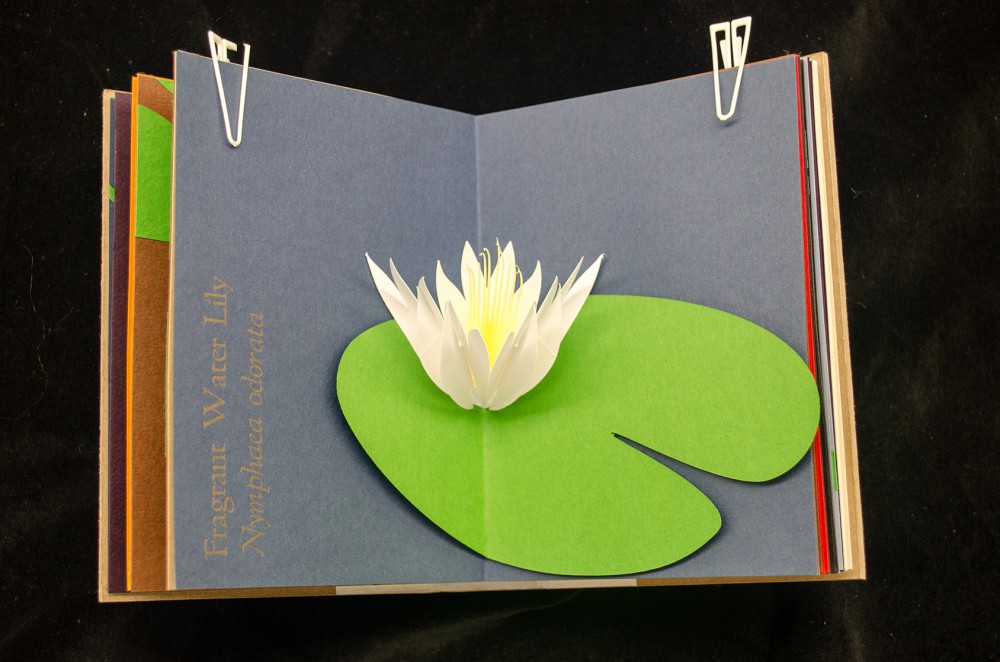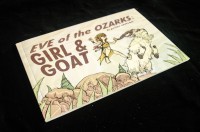The Art of the Book, the Book as Art
This exhibition begins with the utterly familiar format of the book and explores what happens when artistic elements move beyond the expected structures typically found in a book and create hybrid formats that are both literary as well as artistic creations.

While there are many techniques that artists, authors, and creators use to create hybrid book formats, this exhibition focuses on just one: the incorporation of visual elements to create physical objects that are both information containers and works of art.
The exhibition features a variety of books from the Arkansas Collection and the Rare Book Collection, both housed in the Special Collections department, that incorporate visual elements in exciting ways. One exhibition highlight are the graphic novels Arkansas natives that explore, through words and pictures, the history and culture of the Ozarks. Other highlights include pop-up books and extra-illustrated books, where previous owners added doodles to the book and added additional meaning to the text.
Artists’ Books
Artists’ books are explicitly designed to be works of art in the form of a book. They are truly hybrid objects: they are works of arts, and they are books. As such, they are artistic as well as literary creations. Beyond embodying the intentional creation of a work of art in book format, individual artists’ books have little in common with one another. Some include textual elements, some do not; some feature drawings, others incorporate collages, fine press printing, painting, photographs, or other visual elements.
Pop-up Books
Although the pop-up books featured here are all contemporary, this hybrid format is over 500 years old. Pop-up books are most familiar to modern audiences as features in children’s books, with individual elements on the page being designed to lift – or pop – off the page and reveal additional text or illustrative elements underneath. This movable element is also a common feature in artists’ books, inviting as it does the reader to participate in the creation of the book’s meaning by deciding when, and how, to reveal the hidden elements.
Graphic novels
To the unsuspecting eye, graphic novels look a lot like comic books with their graphic panels, speech bubbles, and the inseparable relationship between word and text. Graphic novels are in fact closely related to comic books, with early graphic novels earning the nickname of “underground comics” to differentiate them from their mass market cousins, which were designed for younger readers and often starred super heroes. Early graphic novels were more often than not politically radical and designed for an adult readership, both in the content they portrayed and the sophisticated portrayal of that content in a hybrid text/visual format. In the last two decades, the graphic novel market has exploded. While there are still many examples of politically subversive graphic novels, this hybrid format is also frequently used to explore history, (auto)biography, culture, and social customs. Featured here are examples of more recent graphic novels and the ways in which Arkansas luminaries, authors, and illustrators contribute to the form.
(Click thumbnail image to enlarge.)


